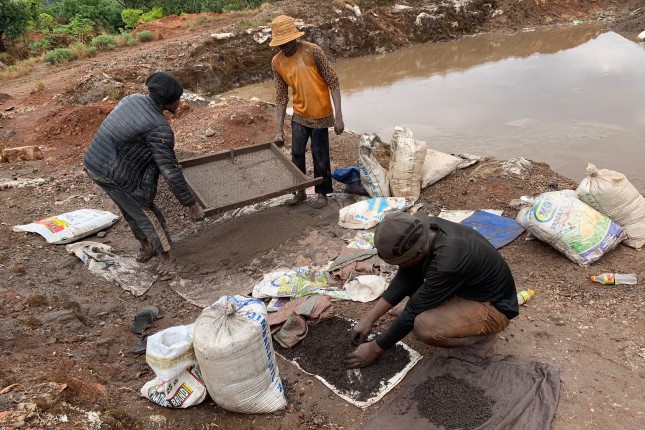-
Extracting Opportunity in the Renewable Energy Transition
June 13, 2022 By Katelyn Rousch
Few people can name from memory the materials required for wind turbines, photovoltaic panel semiconductors, and electric car batteries. The list is too long, but among the more recognizable minerals used in renewable production are aluminum, lithium, cobalt, iron, copper, lead, and nickel.
Alec Crawford, the Director of Nature for Resilience at the International Institute for Sustainable Development, points to an inescapable irony in the use of many of these materials. Renewable energy, though an important facet of climate change mitigation, is not inherently sustainable.
“We can’t grow this stuff, you’ve got to mine it—or you have to recycle it,” says Crawford in a recent interview.
Crawford has done extensive research on climate change adaptation, mining governance, and conflict and peacebuilding. In 2018, he co-authored a study titled “Green Conflict Minerals: The fuels of conflict in the transition to a low-carbon economy,” which maps out reserves of materials needed for renewable development and their overlap with areas experiencing high political corruption or instability.
Mining has a history of funding rent seeking governments, armed groups, environmental degradation, and enabling the exploitation of local communities. But Crawford says it doesn’t have to be that way: “In the eyes of the public, I think the mining sector is often vilified. There is an opportunity within the mining sector to try to shed some of the stigma that has traditionally followed that sector around.”
Crawford cites the EU regulations on 3TG—tin, tantalum, tungsten, and gold—as an example of how policymakers can push for responsible sourcing and regulate conflict minerals. “If the choice is between a responsible mineral supply chain that’s more expensive or going the traditional route somewhere else,” he observes, “and it’s easier to do it somewhere else without worrying about all those checks and balances, that’s a problem.”
Policymakers should consider how energy transition critical minerals can be incorporated into responsible mining policies, regulations, and legislation. For instance, cobalt is a conflict material that battery makers are trying to remove from their supply chains. Fully 56 percent of this mineral’s reserves are located in the Democratic Republic of the Congo, a state that is considered very fragile and very corrupt.
Yet Crawford points to the challenges involved in merely swapping out conflict materials. Innovations in renewable technology have the potential to reduce the need for certain conflict minerals. But delays in gearing up new sources and new mines to extract them could be a roadblock to a low carbon future. New mines for niche replacement minerals require sufficient market demand to receive investment. Furthermore, turning to alternative materials also ignores the problems within existing markets that international policy may be able to address.
“Getting a mine up and running, that takes years, if not longer,” says Crawford. “There are potential pitfalls around that kind of mismatch between the lead time it takes to get a mine up and running and get minerals to market and how fast the technology is shifting.”
Despite its reliance on extractive industry, renewable energy is still far less carbon intensive than fossil fuels. Crawford observes that recycled minerals offer another path to fulfill these needs for material. “Recycling these minerals and metals has to vastly and rapidly increase because it’s not where it needs to be at the moment,” he says. “The answer isn’t just mine more. It can also be recycle more and use what we’ve already mined.”
Crawford predicts “an explosion of demand” for minerals associated with renewable energy development. This demand will primarily be met by the growth of extractive industries.
“A transition to a low carbon future is going to have mining at the center of it,” he says. “If that mining is done in a responsible way where proper social and environmental considerations are taken into account and it’s done well throughout the entire supply chain, then that’s fine.”
Katelyn Rousch is a rising senior studying Economics and Environmental Studies at Ohio University’s Honors Tutorial College.
Sources: International Institute for Sustainable Development (IISD); European Commission; The Fund For Peace; Transparency International.
Photo Credit: Cobalt mining in the Democratic Republic of the Congo. Courtesy of Afrewatch 2020/Flickr user IIED.
 A Publication of the Stimson Center.
A Publication of the Stimson Center.



